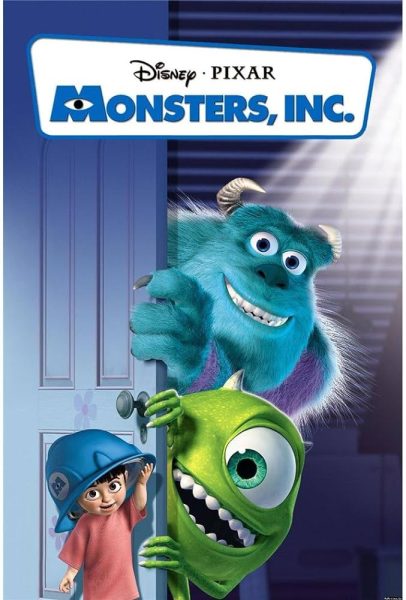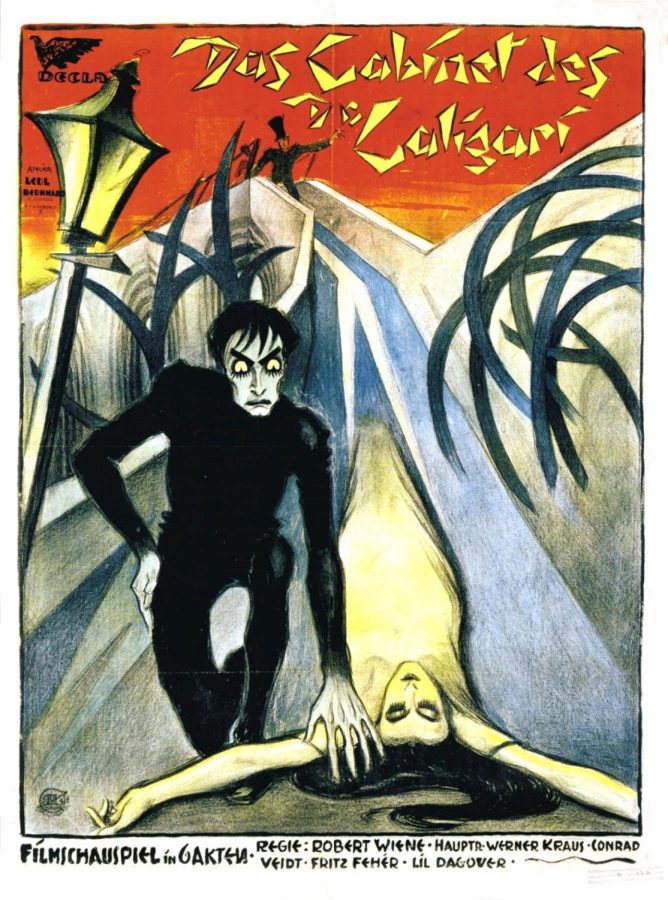“The Cabinet of Dr. Caligari” (1920) Review
The Cabinet of Dr. Calligari is a German historic horror movie from 1920 directed by Robert Wiene. Widely considered as the first horror film, it follows our protagonist Frances and his friend Alan (played by Friedrich Feher and Hans Heinrich Von Twardowski) as they go to a local carnival. At the carnival is the hypnotist Dr. Calligari (played by Werner Krauss) and the somnambulist (sleep-walker) Cesare (played by Conrad Veidt), who, after awakening from his slumber, predicts that Alan will die at dawn. On their way home, they meet Jane (played by Lil Dagover) and profess their love for her. That night, Cesare’s prediction comes true, as Alan is murdered by Cesare himself. Distressed by his friend’s death, Frances swears that he’ll find the perpetrator, as Cesare sets his eyes on Jane.
While not a horrifying movie, it still holds up as being eerie, whether intentional or not. The awkward movements Cesare makes during his nightly murder sprees are smack dab in the middle of the uncanny valley, and the use of makeup on makes him look ghoulish. The majority of the eeriness is really unintentional, as the main culprits are the dark lighting and the sheer antiquity of the movie. The acting is done well, as the actors convey their emotions clearly. Veidt’s portrayal as Cesare, was really well done, with his movements and expressions making the character one that will stay in the back of your mind long after the movie’s over. The other characters left more to be desired, as they didn’t really have any personalities. The sets in this movie are not the prettiest, but the German Expressionist style is rampant with slanted buildings and doors, and stylized backgrounds that will bring to mind directors like Tim Burton and even movies like The Nightmare Before Christmas. Their main problem is that they look like they were hastily made. The use of the colors is also a major part of the movie, as the night, day, and even the inside of people’s homes have specific colors throughout. It does its best to immerse the viewer, and for the twenties, I could see audiences feeling like they were there alongside them.
With that being said, it is sort of a slog to get through. I often found myself being more entertained by background characters than the actual protagonists most of the time. (Thank you screaming monkey!) The story is simple enough where not much is left to the imagination, and the majority of the movie can be easily predicted. The twist ending is more confusing than thought provoking, and will leave the viewer scratching their head. It’s not a bad movie by any means, but the only real reason to watch it is for the historical aspect or bragging rights. If you really want to watch a silent horror movie, I suggest watching Nosferatu instead.
I give it six screaming monkeys out of ten.





